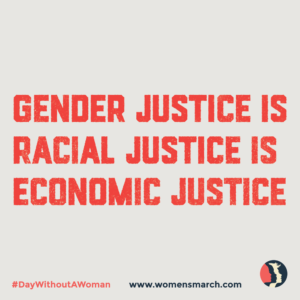The staff editorial is the majority opinion of The Murray State News Editorial Board

On March 8, protesters gathered in Washington D.C. to celebrate International Women’s Day and observe a “Day Without a Woman.”
Many of the march participants also took part in the Women’s March on Washington Jan. 21.
Like the Women’s March, the event was supposed to bring awareness about gender inequality issues and support women who are marginalized or facing systematic inequalities. But could the event have unintentionally highlighted and possibly benefited other systematic problems?
Women were encouraged to take the day off work, whether the labor was paid or unpaid, as a “demonstration of economic solidarity” and to “[recognize]the enormous value that women of all backgrounds add to our socio-economic system,” according to the event’s website.
Participants were also encouraged to avoid shopping for the day (unless the business is small and women or minority-owned) and to wear red to show support.
The event prompts an important question: doesn’t the march increase visibility for primarily white, wealthy and privileged women rather than, say, a poor trans woman of color who arguably faces much more discrimination in the workplace?
On the event’s website, the question is raised: “What about women who cannot afford to take the day off work or those who fear they will be fired?”
In other words, how is a woman who is unable to afford not working supposed to participate in the event?
The answer is a bit of a letdown: the women who are able to – the women who are privileged enough to take a trip to Washington – will march for them. “We strike for you,” the website reads.
It seems the march, unfortunately, was preaching to the choir more than it was reaching those who need saving.
While thousands of women marched, there were thousands of other women who could not leave their children and jobs, did not own a red shirt and had to buy groceries that day to feed themselves and their children. Those women might have also been surrounded by male workers who, if they were aware of the march, scoffed at its requirements. Those women are who must be heard, and it’s those men who must be educated. But will the news cameras reach them?
Our skepticism is not to say the effort isn’t important or the intention of the organizers isn’t good-natured. Resistance is resistance, and the march is a call to action that hopefully exposed harsh truths to those who needed to hear it.
But when the efforts primarily benefit groups who are suffering the least, what is tangibly accomplished?
While systematic changes often require much time and grand gestures, we cannot pretend praising privilege and continuing to allow the marginalized to stay in isolation makes measurable change. Perhaps the most significant suggestion the organizers offer is also the most challenging one: demand your employer review policies that affect women and minorities. Is there gender or race discrimination taking place in the workplace? These concepts do not have to be vague and abstract; any employer should be able to distribute concrete numbers and facts concerning employee treatment and benefits.
Big issues require big action, but sometimes those actions must take place on a personal level before widespread effects can take place. Talk to your employer, your coworkers or employees – find out specifically what problems must be resolved. And if you know a woman who doesn’t have the support or resources to perform acts of protest, lend her a hand. Assist her with child care, buy her groceries, cook a meal or help her find employment or education opportunities. Gender inequality is a real issue, but we must take responsibility first by caring for each other.